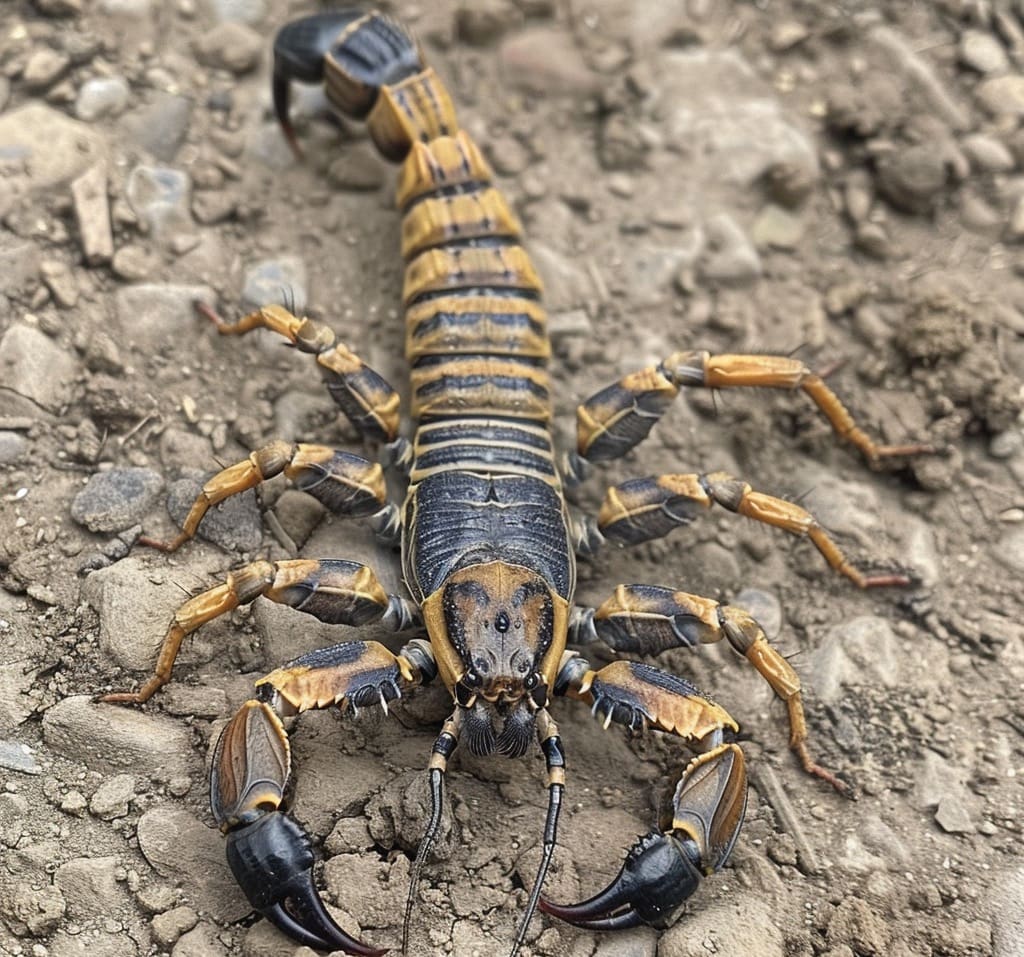
Don't Take Chances With Scorpions
When we think of Texas, scorpions might not be the first thing that comes to mind, but these fascinating creatures are as much a part of the landscape as the iconic bluebonnets and longhorns. In our comprehensive guide to scorpions in Texas, we'll dive deep into the world of these intriguing arachnids, shedding light on their habits, habitats, and how they fit into the Texan ecosystem.
Scorpions might have a fearsome reputation, but there's so much more to these desert dwellers than meets the eye. From their unique survival strategies to their crucial role in controlling insect populations, we'll explore the surprising facts that make scorpions an essential part of Texas's biodiversity. Join us as we uncover the secrets of these misunderstood creatures and learn how to coexist with them in the Lone Star State.
Common Types of Scorpions Found in Texas
In exploring the diverse Texan landscape, we're bound to encounter a variety of scorpions. Each species offers a unique glimpse into the adaptability and survival strategies of these intriguing arachnids. Let's dive into some of the most commonly found scorpions across the state.
Striped Bark Scorpion
Among the various species, the Striped Bark Scorpion (Centruroides vittatus) stands out as the most prevalent. Adults span about 2 ½ inches in length, distinguished by their yellowish-tan color with two broad dark stripes running down their back. Interestingly, males sport longer tails than females. While their sting can cause a moderate reaction, it's crucial for those affected to seek medical attention promptly. These creatures are not just confined to deserts; they thrive throughout Texas, especially in Central Texas, preferring cooler, moist environments to the arid conditions many associate with scorpions.
Texas Cave Scorpion
The Texas Cave Scorpion (Pseudouroctonus reddelli) remains a species shrouded in mystery, often found in or around caves. Their venom, likened to a bee sting, poses minimal threat to humans. These nocturnal hunters, unique to Central Texas, primarily feed on cave crickets, showcasing their adaptability in various environments. Their preference for cavelike conditions sometimes leads them into homes, particularly those near natural areas or with available shelter such as wood stacks.
Giant Hairy Scorpion
Venturing into the realm of the Giant Hairy Scorpion (Hadrurus arizonensis), we find the largest scorpion in North America. Its intimidating size is complemented by a relatively benign sting, less venomous than its smaller counterparts. This species, however, is more commonly found in the western parts of the United States, with occasional sightings in Texas. They are nocturnal predators, using their impressive claws to capture prey rather than relying solely on their venom.
Straight-Faced Solifugid
Although not a true scorpion, the Straight-Faced Solifugid (Solifugae) often gets lumped in with them due to its scorpion-like appearance. This creature is known for its speed and agility, capable of moving swiftly across the desert floor. While they possess no venom, their large chelicerae can deliver a painful bite if provoked. Their presence highlights the diverse and sometimes misunderstood members of the arachnid family found within Texas.
Lindo Scorpion
The Lindo Scorpion (Diplocentrus lindo) is another species that calls Texas home. These scorpions prefer secluded, undisturbed locations where they can hunt in peace. While information on their behavior and impact on the ecosystem is limited, they contribute to the biological diversity and balance within their habitats, preying on a variety of insect species.
Florida Bark Scorpion
The Florida Bark Scorpion (Centruroides gracilis), despite its name, can also be found in Texas, particularly in areas that mimic its preferred tropical habitat. These scorpions are adaptable, often taking residence in human dwellings where they can find shelter and food. While their sting is painful, it's not typically life-threatening, barring allergic reactions or individual sensitivities.
Lesser Stripetail Scorpion
Lastly, the Lesser Stripetail Scorpion (Chihuahuanus coahuilae) makes its presence known in the Texan landscape. Smaller than the Striped Bark Scorpion, this species still plays a pivotal role in controlling insect populations. They are known for their resilience and ability to thrive in various environments, from deserts to grasslands.
Texas's scorpion populace is as varied as the state's geography. By understanding these creatures' habits and habitats, we can appreciate their role in the ecosystem and learn to coexist with them more harmoniously.
Identifying Scorpions in Texas
When encountering scorpions in Texas, understanding how to identify them can make all the difference in ensuring our safety and that of our loved ones. Let's dive into the key aspects that will help us recognize these arachnids more confidently.
Physical Characteristics
Scorpions, belonging to the class of arachnids, share some common features with spiders, such as eight legs and a pair of pincers. However, what sets them apart is their distinctive tail, ending in a venomous stinger. The Striped Bark Scorpion, the most common species encountered in Texas, can be identified by its yellowish-tan color and two broad, dark stripes running the length of its back. A dark triangular spot above the eye in front of the head is another characteristic feature. Adult Striped Bark Scorpions measure about 2 1/2 inches long, making their size a notable identification mark.
Scorpions' slender pedipalps and long, slender tails are quintessential aspects of their appearance. This helps differentiate them from similarly sized arachnids. Unique to certain species, like the Straight-Faced Solifugid, are vertically twisted jaws, which are significantly larger relative to their body size compared to other terrestrial invertebrates. Although not true scorpions due to their lack of venom, their inclusion in discussions about scorpions is warranted due to their alarming appearance and painful bite.
Behavior Patterns
Understanding scorpions' behavior is crucial for identifying and avoiding unwanted encounters. Most Texas scorpions are nocturnal hunters that prefer solitude. They come out to prowl for food at night entirely solo and find cool places to rest during the hot daytime. Scorpions are also known for their preference to remain alone, only hunting or sleeping in pairs when absolutely necessary. This behavior highlights their adaptability and survival skills in various environments.
The notion that scorpions are dangerous predators is partly true. They are indeed predators that predominantly feed on insects and spiders, but their threat to humans varies by species. The Striped Bark Scorpion, for instance, is known to invade homes, making it a common concern for residents.
Habitat
Scorpions' habitats in Texas are as diverse as the species themselves. They are found in all parts of the state but thrive predominantly in southern and western regions due to the warmer climate. Outdoors, they inhabit cool, moist soil under rocks, logs, and organic debris. However, changes in weather, particularly hot and dry conditions, may drive them into temperature-controlled homes.
Once inside, scorpions seek out basements, laundry rooms, wall voids, and other cool, damp areas. Their knack for climbing makes trees, walls, and objects with rough surfaces attractive habitats. Properties with heavy insect activity are especially attractive to scorpions, fulfilling their need for shelter and food.
By familiarizing ourselves with these characteristics, behaviors, and habitats, we can better identify scorpions in Texas, ensuring we're prepared to manage encounters with these misunderstood arachnids effectively.
Interaction with Scorpions in Texas
In navigating the landscape of Texas, it's not just the heat and the vast, open spaces that we must consider, but also the wildlife, particularly scorpions. Understanding how to interact safely with these arachnids is essential for anyone living in or visiting the state.
What Is the Scorpion Lifecycle in Texas?
The lifecycle of a scorpion, particularly the Striped Bark Scorpion, the most common in Texas, involves several stages. They begin as eggs, carried inside the female. Once hatched, the young scorpions, known as nymphs, ride on their mother's back until their first molt. These creatures can live up to 5 years, going through multiple molts before reaching full maturity. Scorpions are known for their resilience and can survive in harsh conditions, which contributes to their widespread presence across Texas.
Safety Precautions
Living alongside scorpions requires taking certain safety precautions to minimize unwelcome encounters. Here are some steps we can follow:
- Keep living areas clutter-free: Scorpions seek hiding spots. Reducing clutter in and around our homes can significantly lower the chances of scorpions taking refuge.
- Seal entry points: Cracks in doors, windows, and foundations offer easy access. Regularly inspect and seal these potential entryways.
- Wear protective clothing: When moving items stored for long periods, doing yard work, or walking in scorpion-prone areas, wearing gloves and closed shoes can provide a layer of protection.
What to Do in Case of a Sting
Scorpion stings, while rarely life-threatening, can be painful and cause significant discomfort. If stung, here’s what we should do:
- Clean the area with soap and water to prevent infection.
- Apply a cold compress to reduce swelling and pain.
- Keep the affected limb elevated to control the spread of venom.
- If symptoms worsen or if the person stung has allergic reactions, seek medical attention immediately.
Avoiding Encounters
While scorpions are common in Texas, there are effective ways to avoid encounters:
- Use a black light: Scorpion exoskeletons glow under a black light, making nighttime searches a good preventive measure.
- Keep landscaping trimmed: Overgrown bushes and tall grasses provide perfect hideouts for scorpions. Maintaining trimmed vegetation can discourage them from settling near our homes.
- Be vigilant: Always check shoes, clothing, and bedding before use, especially if they have been left on the floor or outside overnight.
By understanding the lifecycle of scorpions and adopting proactive safety and avoidance measures, we can coexist with these intriguing yet potentially dangerous neighbors. Let's respect their place in the ecosystem while ensuring our safety and that of our loved ones.
Conclusion
In our journey through the compelling world of Texas scorpions, we've uncovered essential facts about their behavior, habitat, and the specific challenges they pose to residents. Scorpions in Texas, particularly the Striped Bark Scorpion, thrive in conditions where they have access to their prey, including centipedes, cockroaches, crickets, silverfish, and spiders. Recognizing what attracts these predators into our homes is the first step in preventing encounters with them.
- Scorpions are relatives of spiders, mites, and ticks.
- The Striped Bark Scorpion is a common species that invades homes in Texas.
Scorpions choose to enter our living spaces for several reasons, but a primary factor is the pursuit of cooler, more humid environments during hot and dry periods. This behavior highlights the importance of ensuring our homes are sealed and protected against these intruders. Here are some precautions to consider:
- Seal openings in the foundation and exterior walls.
- Repair or replace torn screens on windows and doors.
- Keep living areas clutter-free to remove hiding spots.
Implementing these measures effectively decreases the likelihood of scorpions making their way into our homes. In addition, understanding that scorpions are attracted to other pest infestations emphasizes the value of comprehensive pest control. By addressing issues with centipedes, cockroaches, crickets, silverfish, and spiders, we indirectly deter scorpions, creating a safer and more comfortable environment for ourselves.
| Attraction Factors | Prevention Measures |
|---|---|
| Cool, moist soil | Seal home openings |
| Presence of prey (e.g., cockroaches) | Repair torn screens |
| Hot and dry outdoor conditions | Keep living areas clutter-free |
Armed with this knowledge, we're better equipped to manage our interactions with scorpions. By taking proactive steps, we minimize the risks associated with these intriguing yet potentially dangerous creatures. Keeping our homes sealed and addressing pest infestations promptly are strategies that contribute to our safety and peace of mind.
We hope you enjoy these informational articles. If you'd like to learn more about our eco-friendly pest control services, call (844) 955-2447.
Read More
Your Path to a Pest-Free Home or Business
Romex Pest Control
We are committed to protecting you, your children, and your pets with our eco-friendly, child-friendly, and pet-friendly guaranteed pest control solutions.
Romex Pest Control is fully insured and licensed in Texas, Oklahoma, Louisiana, and Mississippi.
Service Areas:
Hours
M-F 8 am–5 pm
Sat 8 am–2 pm
Sun Closed
Established 2016 © Copyright 2025 Romex Pest Control










